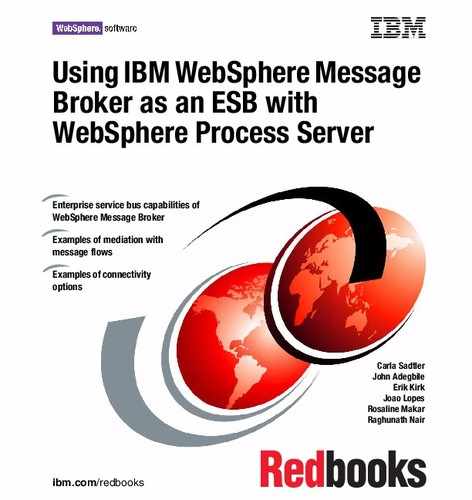
168 Using IBM WebSphere Message Broker as an ESB with WebSphere Process Server
7.1.1 Process and message flow
Figure 7-2 provides a high-level look at this scenario.
Figure 7-2 Scenario overview
We describe the highlights of this scenario, numbered in Figure 7-2, as follows:
1. WebSphere Process Server hosts a business process that sends two
separate messages to WebSphere Message Broker. The first message is
sent by using a one-way operation. No response is expected. The second
message is sent by using a request-response operation.
2. Both messages are sent to WebSphere Message Broker by using
SOAP/HTTPS transport.
a. The first call creates a Secure Sockets Layer (SSL) handshake and sends
a fire-forget SOAP message to the broker’s VerifyCredit message flow.
b. The second service call creates an SSL handshake and sends a SOAP
message to the brokers OpenAccount message flow.
3. WebSphere Message Broker receives each request and starts the
appropriate message flow.
a. The VerifyCredit message flow sends the credit request to two services. It
transforms the message by using the appropriate tagged delimited string
(TDS) format for each service. The first message is parsed to the
proprietary format expected by the Legacy 1 application. The second
WebSphere
Process
Server
Legacy 1
Legacy 2
SOAP/HTTP(s)
1
2
3
4
Legacy 3
TDS (Proprietary Format)
X12 (Proprietary Format)
XML (Proprietary Schema)
Input Queue
Output Queue
SOAPHTTP(s)
Fire/Forget
Request/Reply
MQ Bindings
SC3.INPUT.LEGACY_1
SC3.INPUT.LEGACY_2
SC3.INPUT.LEGACY_1
SC3.OUTPUT.LEGACY_1
WebSphere Message Broker
Transformation Routing
..................Content has been hidden....................
You can't read the all page of ebook, please click here login for view all page.
